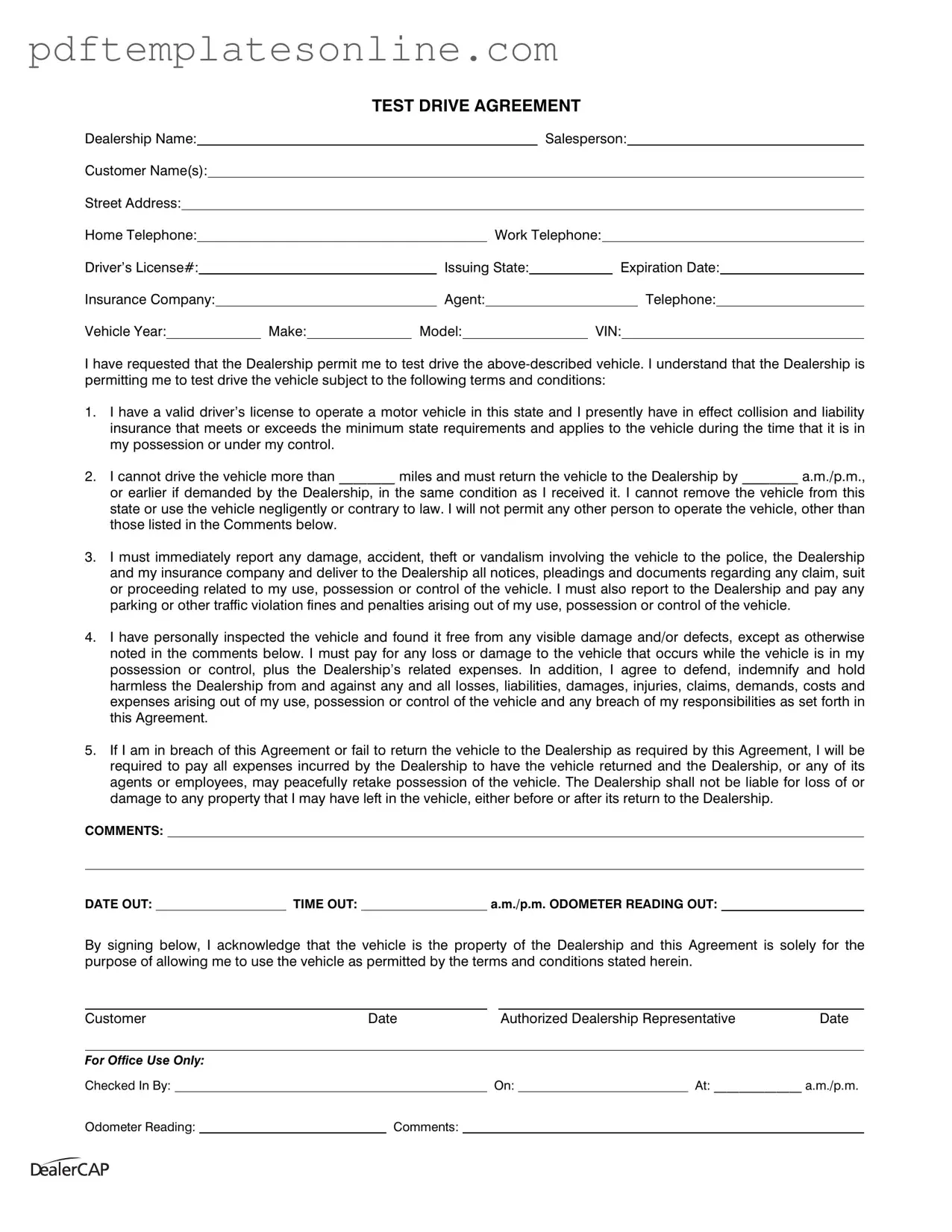Blank Test Drive Form
The Test Drive form is a crucial document that allows potential buyers to experience a vehicle before making a purchase. It outlines the terms and conditions under which a customer can operate the vehicle, ensuring both the dealership and the customer are protected. Understanding this form is essential for a smooth and enjoyable test drive experience.
Access Test Drive Editor Now
